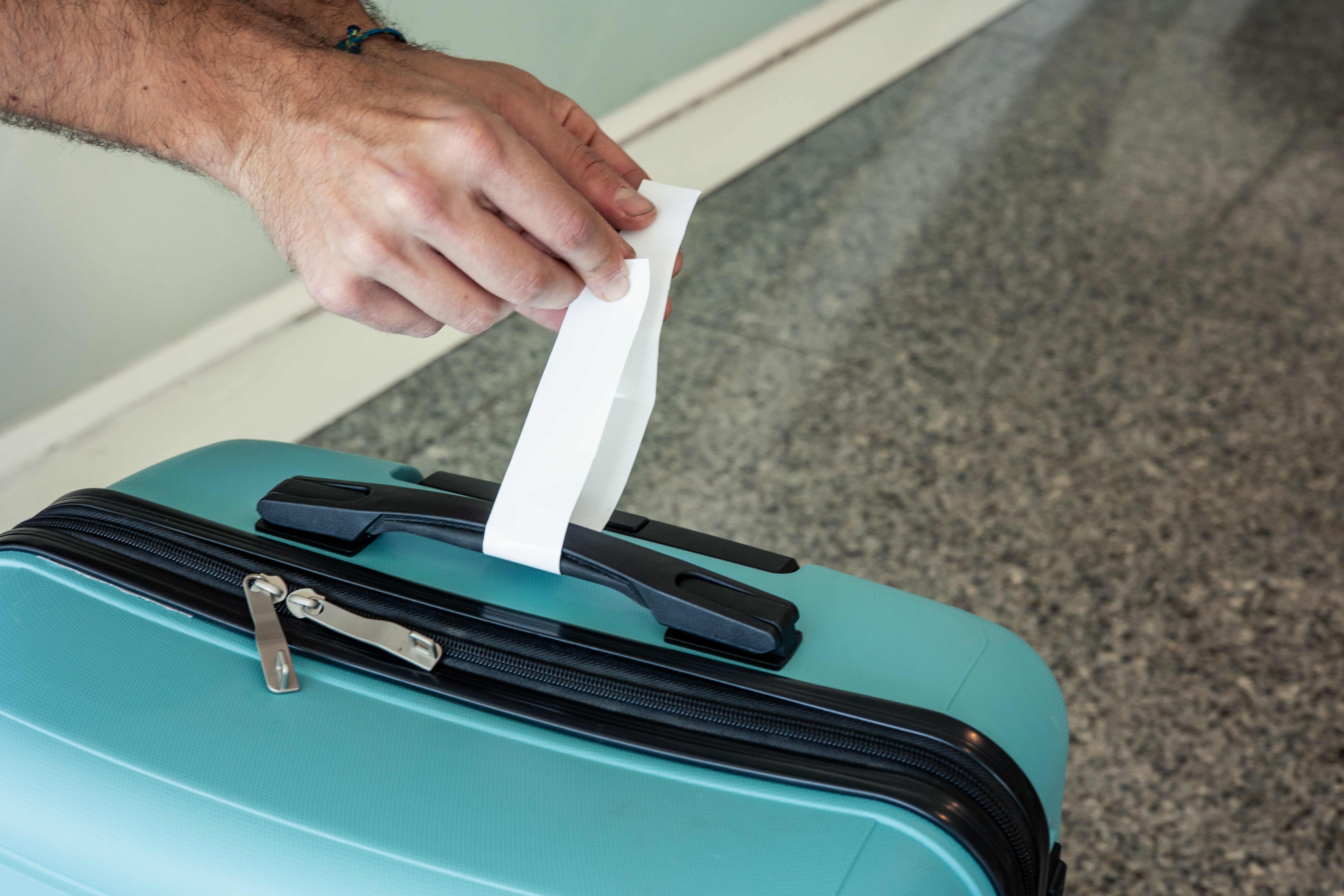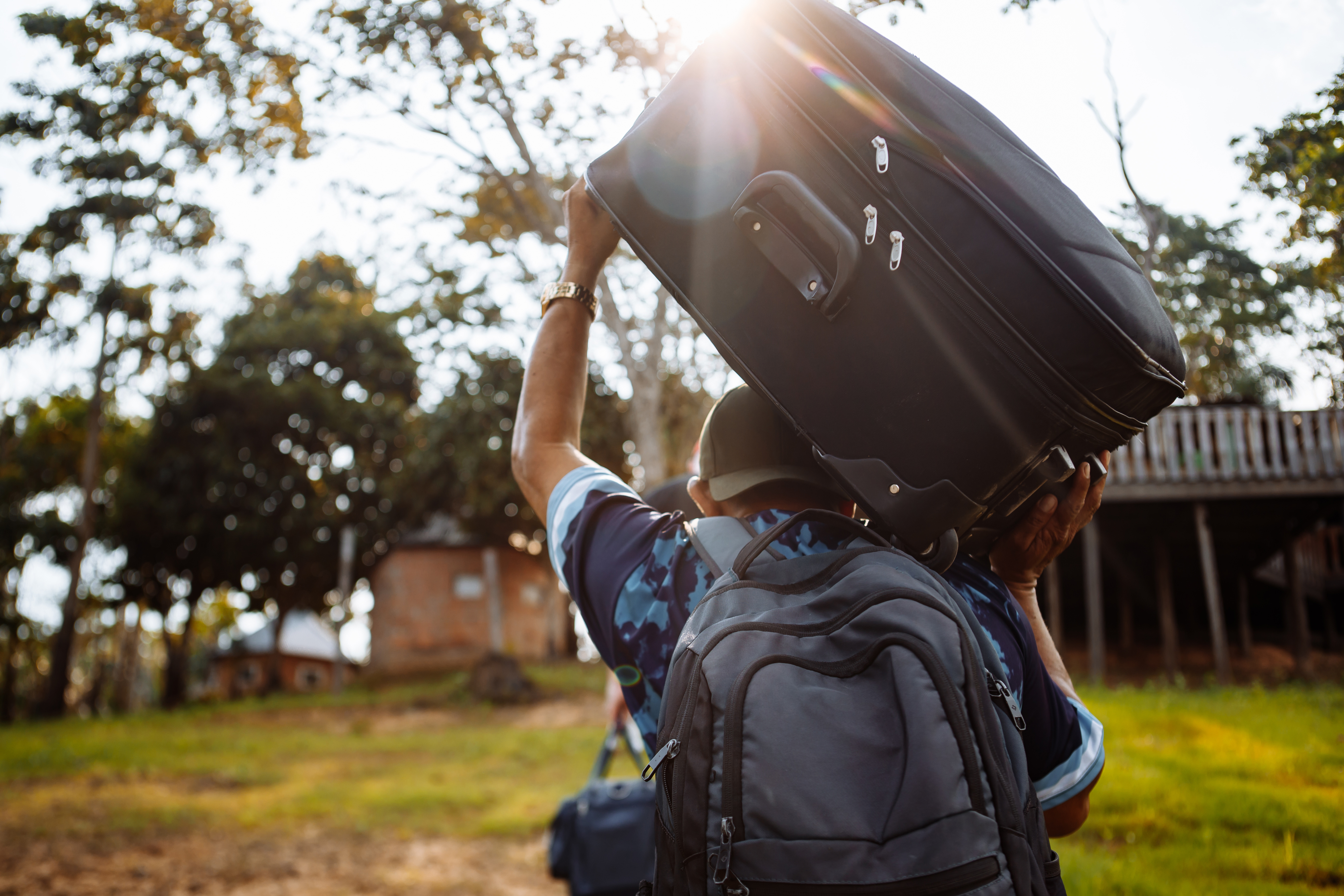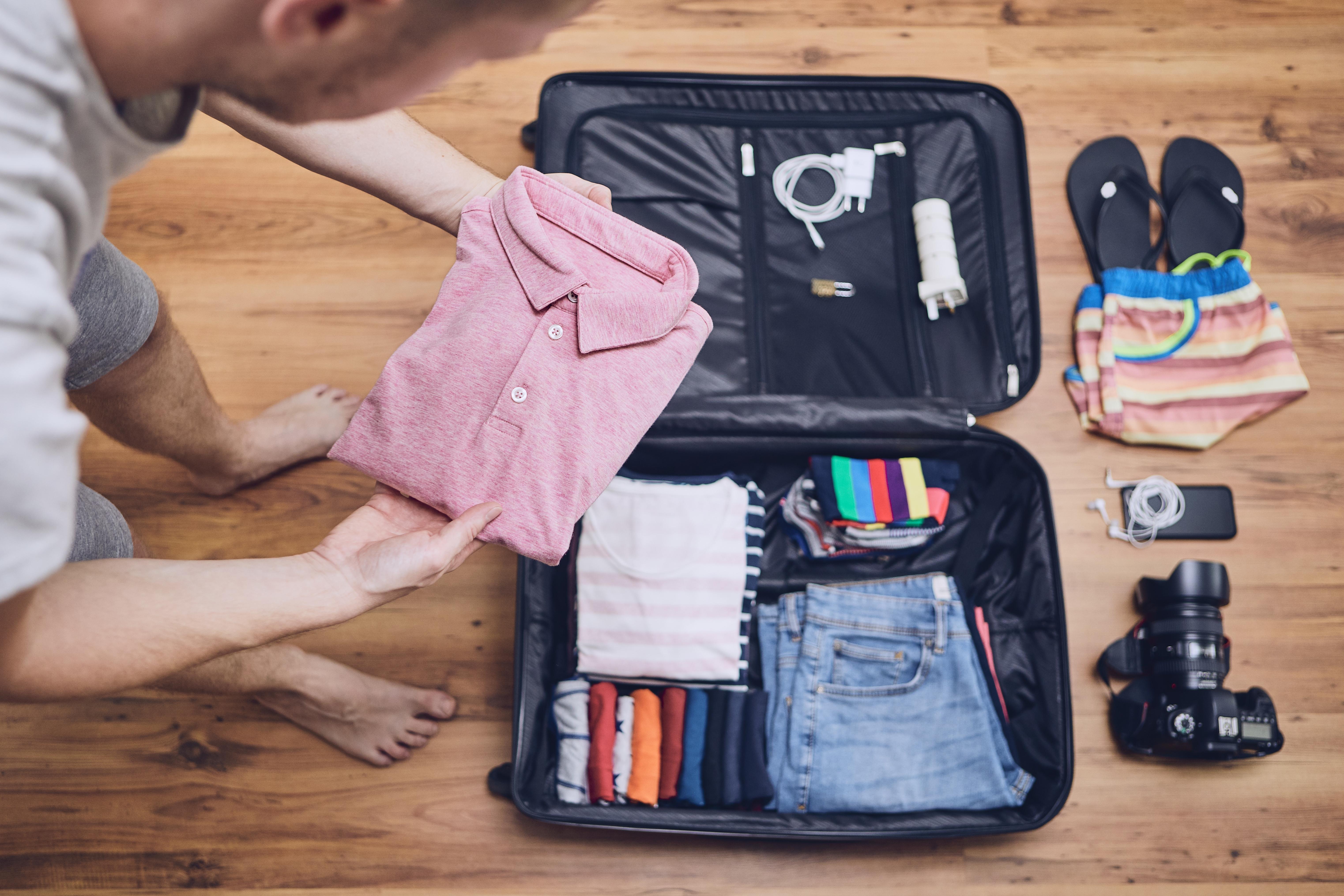31 Packing Mistakes That Can Ruin Your Trip (and Easy Fixes)
Ah, the pre-trip ritual: that exhilarating rush of wanderlust colliding head-on with the sheer dread of the packing process. We've all been there – the straining zipper threatening to burst, the mid-flight panic as you realize you forgot something crucial, or the soul-crushing sting of unexpected overweight baggage fees eating into your souvenir fund. These aren't just minor annoyances; they're vacation villains, capable of turning your carefully planned adventure into a logistical nightmare. But what if you could banish packing stress forever? What if every item found its perfect place, every bag felt lighter, and every journey began with effortless grace? We've gone beyond the basics, meticulously cataloging and significantly expanding our essential guide. Prepare to finally pack smarter, not harder, as we unveil 31 specific packing pitfalls and their ingenious solutions, transforming your luggage from a burden into your best travel companion.
1. Overpacking: The Weighty Consequences

Overpacking is a classic mistake that many travelers make, often driven by the "just in case" mentality. While it might seem prudent to prepare for every possible scenario, the reality is that excess baggage can lead to hefty airline fees, physical strain, and logistical headaches. Lugging around a heavy suitcase can sap your energy and make navigating airports, train stations, and city streets a daunting task. The solution lies in strategic packing. Start by laying out everything you think you need, then remove items that serve a similar purpose or are easily replaceable at your destination. Prioritize versatile clothing that can be layered and mixed, and rely on travel-sized toiletries. By embracing minimalism, you’ll not only lighten your load but also free yourself from the burden of unnecessary baggage.
2. Ignoring Airline Baggage Policies: The Costly Oversight

In the era of budget airlines and strict baggage policies, failing to familiarize yourself with the specific rules of your carrier can lead to unexpected expenses and delays. Each airline has its own set of regulations regarding weight limits, dimensions, and the number of bags allowed. Ignorance of these rules can result in last-minute repacking, additional fees, or even having to leave items behind. To avoid this, always check your airline’s website for the latest baggage policies before you pack. Consider investing in a portable luggage scale to ensure your bags comply with weight restrictions. By staying informed and prepared, you can avoid unpleasant surprises at the check-in counter and ensure a smoother start to your journey.
3. Poor Organization: The Chaos Within

A disorganized suitcase can turn your travel experience into a frustrating scavenger hunt. When items are haphazardly thrown together, finding what you need becomes time-consuming and stressful. This lack of organization can also lead to damaged belongings, as delicate items may get crushed or tangled. The key to avoiding this chaos is to adopt a systematic packing approach. Utilize packing cubes or compression bags to categorize and compress clothing, making it easier to locate specific items. Roll your clothes instead of folding them to save space and reduce wrinkles. Keep toiletries and electronics in separate, clearly labeled pouches. By maintaining an organized suitcase, you’ll be able to effortlessly access your belongings and enjoy a more relaxed travel experience.
4. Failing to Secure Valuables: A Risky Gamble

Traveling with valuables such as electronics, jewelry, and important documents requires extra vigilance. Failing to properly secure these items can lead to loss, theft, or damage, potentially ruining your trip. To safeguard your valuables, always keep them in your carry-on bag, where you can easily monitor them. Invest in a quality travel lock and consider using a money belt or hidden pouch for your passport and cash. When staying in hotels, utilize the in-room safe or, if unavailable, keep valuables with you or locked in your luggage. Taking these precautions will give you peace of mind and allow you to focus on enjoying your adventure rather than worrying about your belongings.
5. Neglecting Weather Considerations: The Unforeseen Element

Packing without considering the weather at your destination can lead to discomfort and inconvenience. Arriving in a tropical climate with heavy wool sweaters or in a snowy region with only light clothing can leave you unprepared and uncomfortable. Before you pack, research the weather forecast for your destination and pack accordingly. Bring versatile clothing that can be layered to accommodate fluctuating temperatures. Don’t forget essentials like a compact umbrella, a waterproof jacket, or sunscreen, depending on the forecast. By aligning your packing with the expected weather conditions, you’ll ensure comfort and adaptability, no matter what Mother Nature has in store.
6. Forgetting Essential Documents: The Trip-Ending Mistake

One of the most critical blunders a traveler can make is forgetting essential documents such as passports, visas, and travel insurance papers. Without these, your trip could be over before it even begins. To prevent this, create a checklist of all necessary documents and double-check it before leaving home. Store physical copies in a secure, easily accessible part of your carry-on. Additionally, consider making digital copies and storing them on your phone or in a secure cloud service. This redundancy ensures that you have backup options should the originals be lost or stolen, allowing you to continue your travels with minimal disruption.
7. Not Accounting for Souvenirs: The Return Trip Dilemma

While packing for your trip, it’s easy to forget about the souvenirs and gifts you might want to bring back. Not leaving room for these items can result in overstuffed luggage or the need to purchase an additional bag, both of which can be costly and inconvenient. To avoid this, plan ahead by leaving some space in your suitcase or packing a lightweight, foldable bag that can be used for extra items on your return trip. Consider shipping larger souvenirs home to save space and avoid carrying heavy items. By anticipating your return trip needs, you’ll be able to enjoy shopping for mementos without the stress of figuring out how to transport them.
8. Packing Prohibited Items: The Security Setback

Bringing prohibited items in your luggage can lead to delays at security checkpoints and even fines. Commonly banned items include sharp objects, flammable materials, and certain liquids. To avoid this hassle, familiarize yourself with the security regulations of the countries you’re visiting, as well as those of your airline. Double-check your luggage before heading to the airport to ensure compliance. If you’re unsure about an item, it’s safer to leave it behind or pack it in your checked baggage if allowed. By adhering to security guidelines, you’ll expedite your journey through checkpoints and avoid unnecessary complications.
9. Skipping Luggage Identification: The Lost Bag Nightmare

Luggage mix-ups and lost bags are unfortunate realities of travel. Skipping the simple step of properly identifying your luggage can make it difficult to recover if it goes missing. Always use a sturdy luggage tag with your contact information, and consider adding a distinctive marker, such as a colorful strap or ribbon, to make your bag easily recognizable. Additionally, include a copy of your itinerary and contact details inside your suitcase as a precaution. These small steps can significantly increase the chances of your luggage being returned to you quickly if it is misplaced, ensuring a smoother travel experience.
10. Disregarding Health and Safety Items: The Unseen Necessities

In the excitement of packing for an adventure, it’s easy to overlook essential health and safety items. Failing to pack a basic first aid kit, necessary medications, or travel-sized hand sanitizers can leave you unprepared for minor health issues that may arise. To prevent this, compile a list of health and safety essentials tailored to your destination and personal needs. This list should include items like band-aids, pain relievers, any prescription medications, and hygiene products. Having these on hand will allow you to address minor health concerns promptly, keeping you healthy and ready to explore.
11. Misjudging the Importance of Footwear: The Uncomfortable Trek

Footwear can make or break your travel experience. Packing the wrong shoes can lead to discomfort, blisters, and even injuries, limiting your ability to explore. Consider the activities you’ll be engaging in and the terrain you’ll encounter when selecting your footwear. A good strategy is to pack one pair of versatile, comfortable walking shoes and one pair of dressier shoes if needed. Break in new shoes before your trip to avoid discomfort. By prioritizing practical and comfortable footwear, you’ll be able to fully enjoy your adventures without being sidelined by foot pain.
12. Flunking the Carry-On Liquid Rules (The 3-1-1 Headache)

It’s a classic security checkpoint snag: forgetting the 3-1-1 liquid rule for carry-ons. All liquids, aerosols, gels, creams, and pastes must be in containers of 3.4 ounces (100ml) or less, all fitting comfortably within one clear, quart-sized zip-top bag, with only one bag per passenger. Violating this often leads to confiscated toiletries, delays, and frantic repacking. Solution: Purchase travel-sized containers or solid alternatives (shampoo bars, toothpaste tablets) and pack your single clear bag correctly before heading to the airport to breeze through security.
13. Checking Essential Medications: A Health Risk Gamble

Never, ever pack critical prescription medications (or even essential OTC meds you rely on daily) in your checked luggage. Bags get delayed, lost, or occasionally stolen. Being separated from vital medication can quickly turn into a serious health crisis, especially in a foreign country where replacements might be difficult or impossible to obtain quickly. Solution: Always keep ALL essential medications, along with copies of prescriptions, in your carry-on bag, directly under your control throughout your journey.
14. Forgetting Chargers, Adapters, and Power Banks

In our hyper-connected world, arriving at your destination with dead electronics is a major drag. Forgetting the specific charger for your phone, camera, or laptop – or neglecting the necessary plug adapter for international travel – is incredibly common. A backup power bank can also be a lifesaver during long transit days. Solution: Create a dedicated "tech pouch" for all essential chargers, adapters (check destination requirements!), and a fully charged power bank. Double-check it before you leave home.
15. Ignoring Passport & Visa Validity (Until It's Too Late!)

This blunder happens months before packing! Many countries require your passport to be valid for at least six months beyond your planned departure date. Forgetting to check your expiry date well in advance can lead to denied boarding. Similarly, assuming visa requirements haven't changed or applying too late can abruptly cancel your trip. Solution: Check passport validity and visa requirements for your destination the moment you start planning, allowing ample time for renewals or applications.
16. Choosing Impractical Luggage for Your Trip Style

Using that enormous suitcase for a quick weekend city break involving cobblestones and metro stairs? Or taking a flimsy duffel on a rugged adventure trip? Choosing luggage inappropriate for your trip's length, destination, or transport methods leads to frustration. Solution: Invest in versatile, durable luggage pieces in various sizes (e.g., reliable carry-on spinner, larger checked bag, sturdy backpack). Match the bag to the specific demands of the journey for easier navigation and better protection of your belongings.
17. Overlooking Carry-On Weight Limits

You carefully ensured your carry-on fits the size dimensions, but did you weigh it? Many airlines, especially budget carriers and international airlines, are now strictly enforcing carry-on weight limits (often surprisingly low, around 7-10kg / 15-22lbs). Being overweight at the gate can result in hefty fees and forced checking of a bag you intended to keep with you. Solution: Always check your airline's specific carry-on weight allowance and weigh your packed bag at home to avoid gate-side panic and penalties.
18. Lacking Backup Copies of Key Documents

Your passport and essential documents (#6) are packed, but what happens if they're lost or stolen mid-trip? Not having backups readily accessible can cause enormous headaches. Solution: Make physical photocopies AND take clear digital photos/scans of your passport ID page, visas, driver's license, flight confirmations, hotel reservations, and travel insurance. Keep physical copies separate from the originals, and store digital copies securely in the cloud and/or on your phone for easy access in an emergency.
19. Neglecting In-Flight or Transit Comfort Items

>Especially for long journeys involving flights, trains, or buses, forgetting items that aid comfort can make transit miserable and leave you exhausted upon arrival. Think neck pillow for support, an eye mask and earplugs to block out distractions, warm socks for chilly cabins, and downloaded entertainment. Solution: Pack a small "comfort kit" in your carry-on with these essentials tailored to your specific journey length and mode of transport. Arriving well-rested is invaluable.
20. Risking Leaks: Poorly Packed Liquids in Checked Bags

While liquids face fewer restrictions in checked luggage, improper packing can lead to messy disasters. Shampoo explosions, lotion leaks, or spilled mouthwash coating your clothes are common, frustrating results of loose caps or pressure changes. Solution: Securely tighten all caps. Place toiletries inside sealed plastic bags (double-bagging is wise). Consider using solid toiletries where possible. Wrap glass bottles carefully. A little extra precaution prevents arriving to a suitcase full of goo.
21. Relying Solely on Connectivity: Forgetting Offline Essentials

Assuming you'll have constant, reliable Wi-Fi or data access upon arrival or during transit can be a mistake. Not downloading offline maps (Google Maps allows this), translation apps, digital copies of documents (#18), boarding passes, or entertainment (movies, music, podcasts) beforehand can leave you stranded or bored. Solution: Before leaving home Wi-Fi, download everything you might possibly need offline onto your phone or tablet. It ensures critical info and entertainment are accessible regardless of connectivity issues.
22. Ignoring the Power of the "Go-Bag" (or Daypack Misuse)

Often, travelers focus solely on their main luggage, forgetting the importance of a well-packed personal item or daypack for immediate needs. This leads to scrambling for snacks, water, entertainment, or crucial documents during transit. Solution: Assemble a "Go-Bag" for your flight/train/bus: a small, easily accessible bag with essentials like a reusable water bottle, a few snacks, medications, entertainment (downloaded!), a pen, and a light layer. This keeps critical items at your fingertips and reduces the need to access your main carry-on mid-journey.
23. Underestimating the Value of Empty Space (for Expansion)

Many travelers pack their bags to bursting, leaving no room for growth. This is a subtle pitfall because it seems efficient until you want to buy souvenirs, local snacks, or even just daily necessities. Solution: Always leave at least 10-15% of your luggage empty. This critical "buffer" space prevents overstuffing, zipper strain, and the need to buy an extra bag for your return. It also accommodates minor purchases and makes repacking less of a struggle.
24. Forgetting to Pre-Charge Everything (Before Departure)

A common oversight: packing your phone, tablet, headphones, and power bank without fully charging them first. Arriving at the airport or destination with dead devices means immediate stress, frantic searching for outlets, and missed entertainment. Solution: Create a "Charge Checklist" for the 24 hours before departure. Plug in all devices, headphones, and especially your power bank. This ensures you're ready to go offline or stay connected from the moment you leave your door.
25. Neglecting a "Dirty Laundry" System

Throwing dirty clothes back into the same compartment as clean ones is a recipe for cross-contamination of smells and potentially germs. This is a common oversight that leads to extra laundry or smelly luggage. Solution: Pack a dedicated, lightweight laundry bag (mesh, reusable fabric, or even a large plastic bag) for dirty clothes. Keep it separate from clean items to maintain freshness and make unpacking much easier upon return.
26. Not Pre-Planning Outlet/Voltage Needs for ALL Devices

Beyond just a universal adapter, travelers often forget to consider voltage compatibility for high-power devices like hair dryers or curling irons, potentially frying them. Also, a single adapter might not be enough for multiple devices. Solution: List every electronic item. Check its voltage (usually printed on the charger – 100-240V is worldwide compatible). Pack enough adapters for concurrent charging and consider a small, multi-outlet travel power strip for efficiency, ensuring all your gadgets can be safely powered.
27. Forgetting a Small, Collapsible Shopping Bag/Backpack

During daily exploration, you'll inevitably buy snacks, water, or small souvenirs. Relying on single-use plastic bags (if even available) is unsustainable and inconvenient. Solution: Always pack a compact, foldable reusable shopping bag or a very lightweight, collapsible daypack. It's invaluable for market visits, carrying an extra layer, or impromptu purchases, reducing waste and the need to juggle multiple small bags.
28. Ignoring the "First Night" Essential Bag

When arriving late or after a long journey, digging through a main suitcase for pajamas, a toothbrush, and basic toiletries is exhausting. Solution: Pack a small, separate pouch or the very top section of your carry-on with "first night" essentials: a change of clothes, basic toiletries, any critical medications, and chargers. This allows you to quickly freshen up and relax without unpacking everything immediately.
29. Packing for the Idea of the Trip, Not the Reality

Many travelers pack an outfit for every imagined scenario (e.g., "I'll definitely go hiking that day," "I'll have time for a fancy dinner every night"). This leads to unused items. Solution: Be realistic about your itinerary. If you're not an avid hiker, don't pack full hiking gear. Focus on versatile pieces that suit your actual planned activities and the primary vibe of your trip, reducing unnecessary bulk and weight.
30. Not Utilizing the "Wearable" Space (Especially for Bulky Items)

Bulky items like heavy coats, hiking boots, or multiple sweaters take up massive suitcase space. A common blunder is packing them when you could be wearing them. Solution: Wear your bulkiest shoes and heaviest jacket/sweater on travel days. Layer up on planes. This frees up precious luggage space, keeps you warm in transit, and ensures you aren't paying for extra weight from essential but large items.
31. Leaving Home Without a Digital Packing List (or a Master List)

Relying solely on memory or a hastily scribbled list for each trip is a recipe for forgetting essentials and increasing pre-trip stress. Solution: Create a master digital packing list (e.g., in a notes app, spreadsheet, or dedicated packing app). Categorize items (Clothes, Toiletries, Tech, Documents). Customize and save it for different trip types. This streamlines future packing, minimizes forgotten items, and makes the whole process less daunting.
Pack Smart, Travel Happy: Your Seamless Journey Checklist

Traveling is as much about the journey as it is about the destination, and how you pack can significantly impact your overall experience. By understanding and avoiding common luggage blunders, you can minimize stress and maximize enjoyment. From careful planning and organization to being mindful of airline policies and destination-specific needs, each step plays a crucial role in ensuring a smooth journey. As you prepare for your next adventure, keep these insights in mind and embrace the art of packing smart. With a well-prepared suitcase, you’ll be ready to explore the world with confidence and ease, turning potential pitfalls into seamless adventures.








